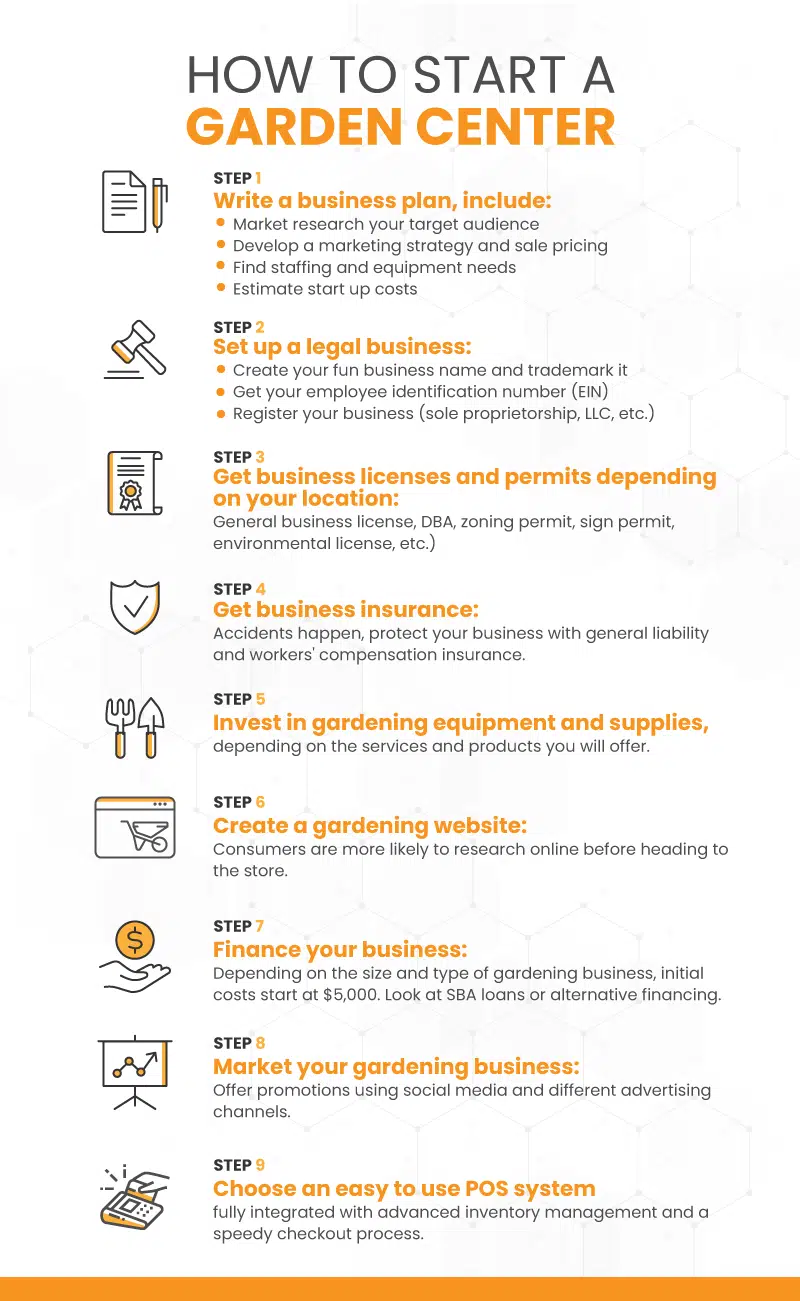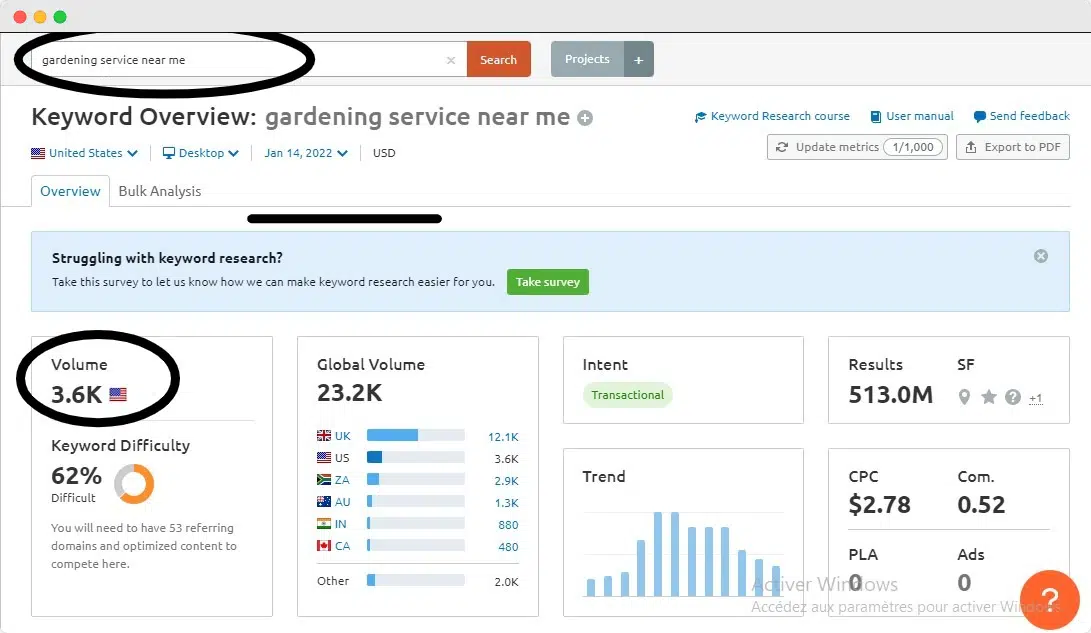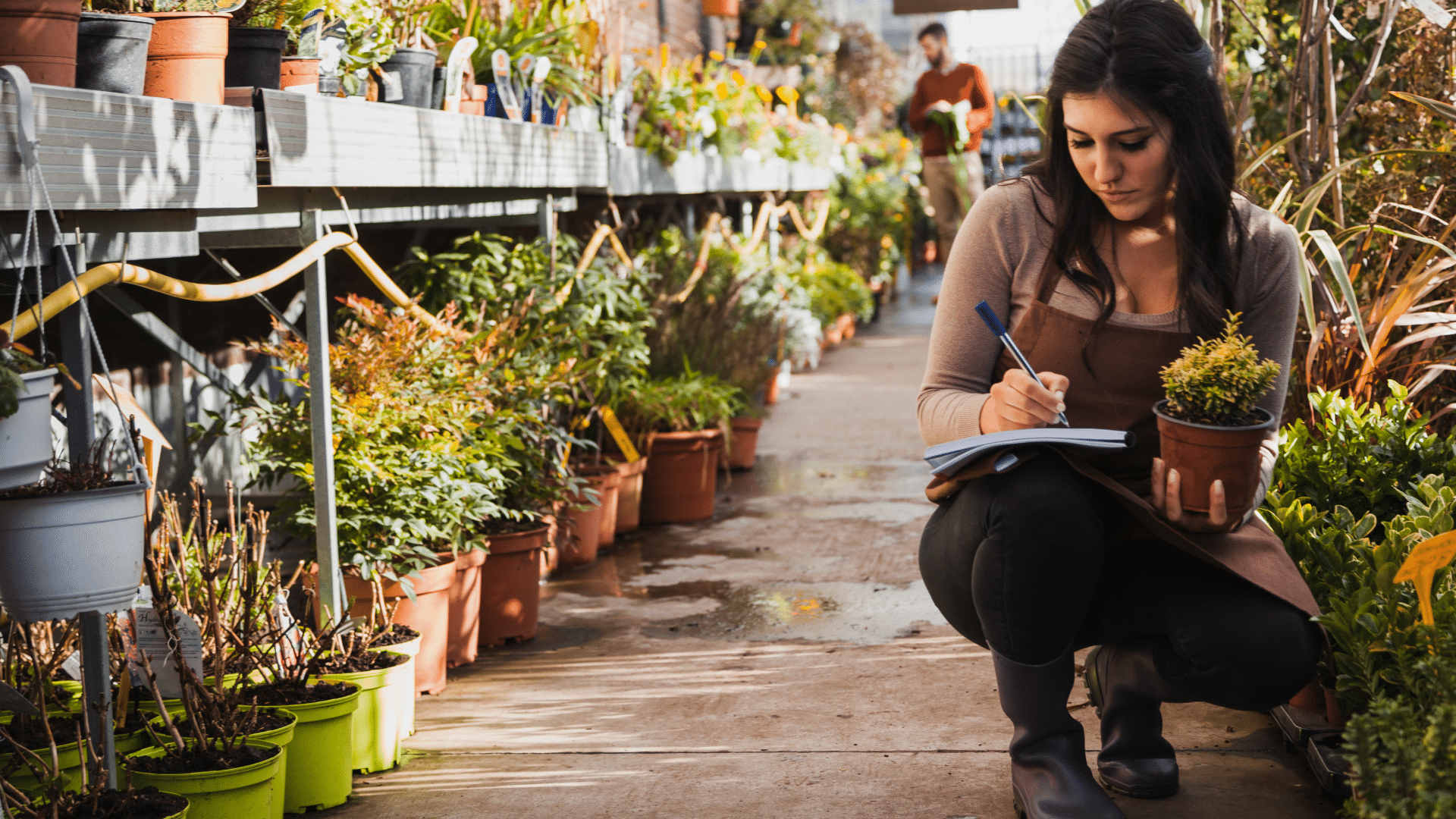
Starting a gardening center business may not jump out at you as a business that’s going to bring a windfall. But the statistics regarding the evolution of the garden retail sector tend to say otherwise. While the pandemic has caused many businesses to suffer significant losses, the gardening industry has exploded.
According to the U.S. Census Bureau, retail sales of building and gardening materials have increased 8.6 percent since the spring of 2020 due to the popular home gardening trend. With the pandemic keeping millions of people at home, the idea of having a small garden has become a way to both relax and keep busy for many Americans. And for many who have adopted the hobby, the desire has seemed to stick.
American consumers’ renewed interest in home gardening is not solely due to the pandemic. A look at sales revenue over the past four years shows that the trend began before the outbreak of COVID-19. Average sales revenue for the home gardening industry grew 4.62% in 2018 to almost 8.79% in 2020, nearly doubling.
If it’s any indication, social media has exploded with passionate amateur gardeners who started Facebook groups and Instagram pages to communicate with other home gardeners and share their botanical experiences. The upward trend in industry growth statistics is reflected in the increased business on social media, with a noticeable peak in the last two years.
As you can see, a retail gardening business is one of the most profitable and, in some ways, easiest businesses to start in 2022. But the million-dollar question is how exactly to start a retail gardening business. This blog will walk you through the steps to help you successfully launch your garden retail business.
The Keys to Starting a Garden Center Business
Before you consider starting a gardening business, it’s essential to know what the job requires and what to expect. The success of a gardening business depends mainly on the characteristics that make it different from other gardening services.
These characteristics affect the type of service you want to provide, the category of customers you target, and the amount of money you charge. Here are some key things to keep in mind before you start a gardening business.
- First, it’s a business that requires quite a bit of physical labor and dirt. Running a garden center requires you to carry heavy loads, dig, prune, clean, and stand or bend over for long hours. While this is good for your health, it can be very tiring and cause physical strain. You will also need to touch and have a thorough knowledge of organic materials, products, pesticides, etc. so check with a doctor before starting.
- Another challenge you will face is that the gardening industry is a seasonal business. The amount of money you make depends a lot on the weather and time of year. Gardening services have a peak business during the summer months and business will slow down if you live in a seasonal climate.
- Starting a gardening business also requires that you have specialized knowledge. Customers expect you to know what type of plants grow fastest or best in what areas. If you find yourself dealing with a clientele with large landscaped areas and an interest in exotic plants, this expectation may be higher.
What Are The Different Steps To Start A Garden Center Business?
Before starting any business, it’s essential to conduct market research to ensure demand for your niche and analyze competition. Market research will allow you to develop a business plan, know your target audience and your competitors, set a fair price for your services, implement a marketing strategy to reach more customers, and offer different services to meet customers’ needs.

1. Write a business plan
The business plan for your garden business should include the following elements:
- An executive summary of the company
- Your goals, vision, and values for the business
- Your target market and the type of service you plan to offer
- Initial set-up costs and sales projection
- Equipment required
- Your staff, including their experience and qualifications
- Your detailed marketing strategy and sales pricing
2. Set Up a legal business
You cannot provide services or products as a business without having done so. Therefore, you must decide whether you want to establish yourself as a sole proprietor, partnership, or limited liability company.
In addition, you’ll need to consider trademarking your business. Trademarking your business will help you avoid legal battles down the road. To ensure that your business name is not yet chosen, visit the USPTO website.
After choosing a name for your business, it’s time to get an employee identification number. This number is a sort of social security number for your company. You can get it in a few minutes from the IRS, and the whole application process is done online. This EIN will be useful in opening business accounts and for receiving tax benefits for business expenses.
3. Get a business license
Obtaining a business license is important to conduct your business legally. Licenses and permits depend on your state, municipality, or county. Most states will require a business license no matter what you sell or how you sell it, but it’s a relatively simple process. The fee to obtain a business license can range from $15 to $1000+ per year, depending on the type of business you have and the state in which you operate.
To start a gardening center business, the most likely business license you’ll need to have is a general business license. If you plan to have a brick-and-mortar store, you’ll also need zoning and sign permits. You can find a more definitive list of various business licenses from the Small Business Administration’s website.
4. Get gardening business insurance
In addition to having licenses, you’ll also need business insurance. A liability insurance policy for your gardening business must be a priority. This insurance protects you if you injure a member of the public or damage their property. It’s also worth keeping in mind that you are legally obligated to cover all of your employees – even if they are only temporary – with employers’ liability insurance and workers’ compensation insurance.
Learn more about business insurance here.
5. Buy equipment and supplies
Starting a gardening business requires specialized tools and transportation. The tools you will need will depend on the services you wish to offer to customers. However, some essential tools are necessary:
- Basic gardening tools
- Wheelbarrows
- Forklifts
- Trucks
- Delivery vehicles
You may also need to use more advanced machinery such as concrete mixers, angle grinders, and chainsaws. If you don’t have a large budget, it is advisable to rent or finance your equipment. However, as your business grows, it’s probably best to buy most tools and equipment outright.
6. Make a website and leverage local SEO
Creating a website is a must for the success of any retail gardening business. People are more and more inclined to look for products and services on the internet and expect to find all the information they need there. Therefore, try to position yourself well on Google by bringing more organic traffic to your website. Also, in the case of garden centers, it’s important to focus on local SEO.

7. Financing your business
Just like any business, you need money to start. However, to start a gardening business, you don’t necessarily need big money. The minimum start-up costs for a small retail garden business are actually only estimated to be about $5,000.
The average cost is about $25,000, while higher-end costs go north of $50,000. Start-up expenses include equipment and supplies, retail inventory, business development, software, office space, employee and freelance work, website development, and advertising and marketing.
To finance your gardening business, you will probably need to use loans or alternative financing to cover expenses and other unexpected costs. One popular option is to apply for loans offered by the SBA.
One of the most popular SBA loans is the SBA 504/CDC loan, which is designed to subsidize small businesses to purchase important and expensive items or equipment that they may need for their business. This will cover a good portion of the expenses associated with equipment purchases. You can also apply for the SBA microloan program for new or small businesses, which offers up to $50,000 per applicant.
Another way to get loans is to open a business line of credit, although this comes with risks. Make sure you pay off your loans in full to establish a good relationship with your lenders and not get slapped with massive interest rates.
8. Market your gardening business
Promoting your business is essential to make yourself known and offer your services to people who might be interested. Here is how you can get the word out.
Use multiple advertising channels to market your products
Most of your potential customers are now likely to search for home and garden products directly on Google and online marketplaces. Therefore, it’s essential that you leverage these channels to promote your business.
Successful home and garden retailers promote their catalogs through Google, advertise on marketplaces, and create product announcements on social media. All of these online platforms are popular and will get you a significant amount of traffic, thereby allowing you to reach a much larger audience.
Get yourself noticed on social media.
You should also take advantage of social media. Much like many industries these days, aesthetics are key. And that applies most to social media advertising. Platforms like Instagram and Pinterest are great ways to position yourself as an inspiration brand and gain more followers. These platforms are filled with photo and home decor accounts, so be sure to show your items in the most Instagrammable way possible. With Tiktok, you can make short videos about some of your decorating and work. These videos can have thousands or even millions of views, potentially giving your business vast exposure.
Provide a seamless user experience on your site
Make that first experience on your site as pleasant as possible. There are endless ways to do this: make your site easy to navigate, use attractive photos, write clear and detailed product descriptions, provide information about your shipping and return policy, feature reviews from past customers, and offer top-notch customer service.
Beef up omnichannel retail strategy
One of the many changes that COVID-19 precipitated in retail is to buy online pick-up in-store (BOPIS). Also known as Click & Collect, this has become an absolute must for contactless retailing and is a good solution for consumers who are inclined to shop online but prefer to pick up their order in-store to avoid any potential problems with sometimes unreliable delivery companies. However, if your goal is to attract more customers to your physical stores, you’ll need to invest in local inventory ads to increase web traffic.
Leverage email marketing to follow up on abandoned carts
Just because a customer puts special plants in their shopping cart doesn’t mean they will necessarily purchase them. The global average shopping cart abandonment rate across all devices is 75.6%. This rate is ten percentage points higher on mobile, implying that many businesses are not optimized for mobile selling.
One of the best ways you can re-engage shoppers who have abandoned their carts is through email marketing. Many people think that email marketing is ineffective, but it is quite the opposite. 48% of shopping cart abandonment emails are opened, making it a good chance for you to win back customers who want to pamper their gardens!
Consider running an automated email campaign to notify them that they haven’t completed the purchase in their cart and show them those items with a clear call-to-action so they come back to your site and complete the process. Entice them with a temporary discount to trigger a sale to make the strategy more attractive.
9. Run your business smoothly with an advanced retail POS system
Lastly, it’s time to get your garden center POS system. As your business grows, the need will arise to automate certain operations of your business. Inventory management will become more complicated to handle as orders increase. And one of the things you want to avoid is running out of a given product while demand is rising. You’ll also need a device that accepts modern payments and facilitates a fast and seamless checkout. Choosing the best garden center POS system is then paramount for the smooth running of your garden center.
Moreover, you’ll need a system that provides inventory management, produces product reports, aids in product ordering, manages your team, and so much more.
KORONA POS is designed for any retail type of business, including garden centers, providing business owners more insight into their operations and allowing them to scale. Get in touch with us for a free trial and product demo to see how it works.












